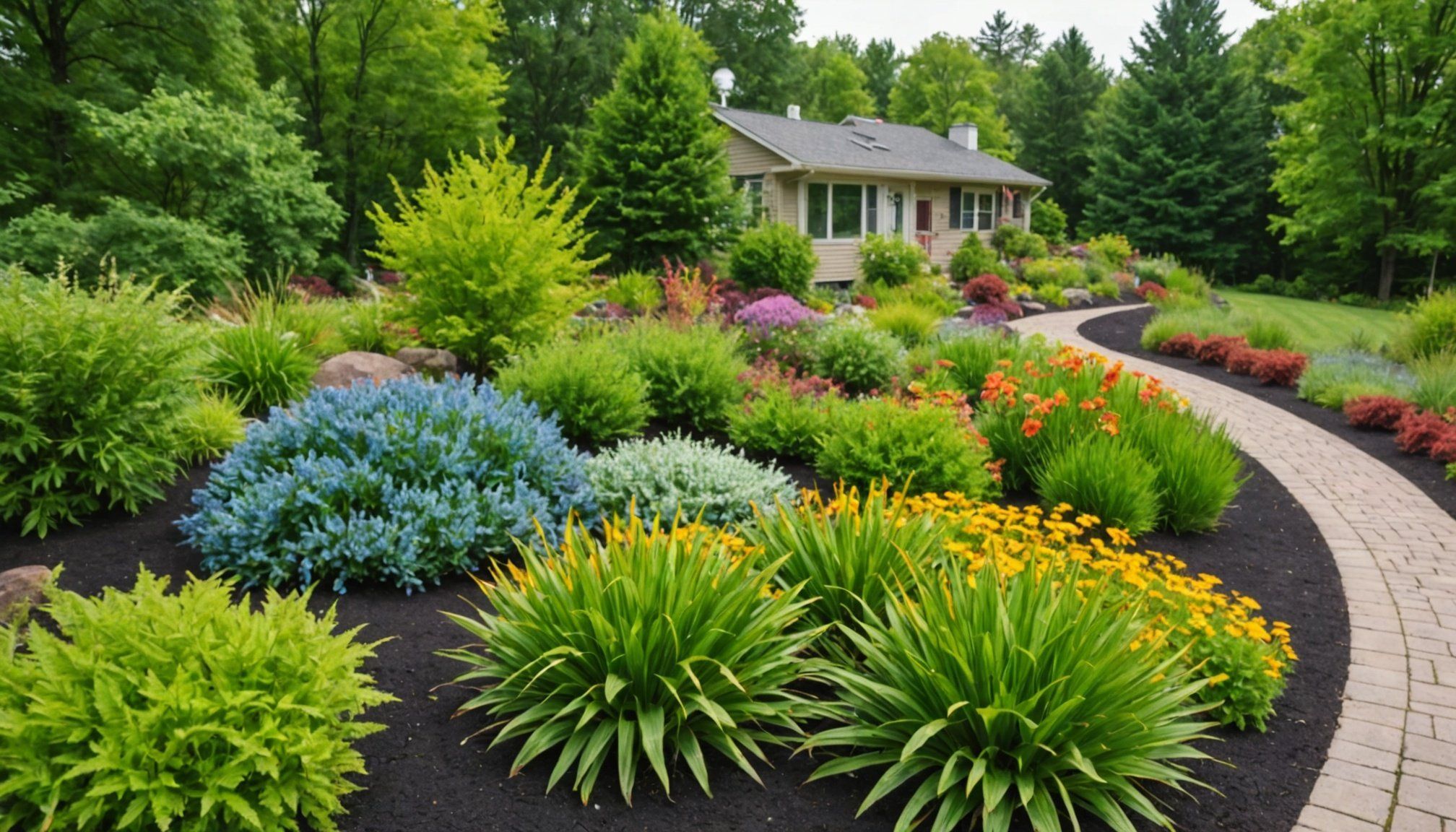Incorporating native plants into your home landscape is a vital step toward enhancing biodiversity and creating a thriving ecosystem. Native species are those that naturally occur in your region, having adapted to local climate, soil, and wildlife conditions over thousands of years. By choosing these plants, you not only foster a healthier habitat for local wildlife, including birds and insects, but you also contribute to the overall balance of the environment. This article will guide you through understanding the significance of native plants, their benefits, and practical steps to incorporate them into your garden. Let’s explore how you can create a sustainable landscape that benefits both your home and the surrounding ecosystem.
Understanding Native Plants
Native plants are species that naturally grow in a particular region without human intervention. They are well-suited to your local environment, making them an excellent choice for landscaping. Unlike non-native or invasive species, which can disrupt local ecosystems, native plants coexist harmoniously with wildlife, soil, and water sources. This section will delve into the characteristics of native plants, providing an essential foundation for your landscaping choices.
In parallel : How can I create an inviting seating area in my garden?
Native species are adapted to survive in local climates, meaning they require less water and maintenance. This makes them particularly appealing for homeowners looking to create a sustainable garden that can thrive with minimal intervention. By incorporating native plants into your landscape, you contribute to local biodiversity by providing food and shelter for various animals, including pollinators like bees and butterflies, as well as birds that rely on native vegetation for nesting and foraging.
Furthermore, native plants help improve your garden’s soil health. Their root systems are designed to hold soil in place, preventing erosion and promoting water retention. This capability enhances the landscape’s ecosystem, creating a healthier environment for all living organisms. When selecting plants, consider the native species that flourish in your area, as they will be the most beneficial for your garden and local wildlife.
In the same genre : How can I create an inviting seating area in my garden?
Benefits of Native Plants for Wildlife
Integrating native plants into your landscape offers numerous benefits for wildlife. When you create a space filled with local flora, you attract a variety of animals and insects that are essential for a balanced ecosystem. This section will explore how native plants serve as critical habitats and food sources for diverse wildlife.
Native plants provide essential resources for local fauna. Many species of birds, for example, rely on native plants for nesting materials, shelter, and food. Berries, seeds, and nectar from these plants are vital for birds’ diets, especially during migration and breeding seasons. Additionally, insects like butterflies and moths depend on specific native plants for their lifecycle, including egg-laying and larval development. By choosing native flora, you can create an inviting environment for these beneficial creatures, ensuring their survival and fostering biodiversity.
Moreover, native plants are less likely to require chemical fertilizers and pesticides, which can harm wildlife. They thrive in local soils and climates, significantly reducing the need for additional water and chemical inputs. By minimizing chemical use, you create a healthier environment not just for the plants themselves, but for the entire ecosystem surrounding your garden.
Establishing a native plant garden means you will attract a variety of wildlife, encouraging a vibrant community of insects and birds. This diversity supports the delicate balance of your local environment, enhancing the overall beauty and functionality of your landscape.
Practical Steps to Incorporate Native Plants
Incorporating native plants into your home garden requires a thoughtful approach. This section outlines practical steps to help you successfully integrate these species into your landscape, ensuring a flourishing garden that supports biodiversity.
First, begin by researching the native species specific to your region. Local horticultural societies, extension services, or native plant nurseries can provide invaluable information about the best species for your area. Consider factors such as sunlight, soil type, and moisture levels when selecting plants, as these will significantly impact their growth and sustainability.
Once you’ve identified suitable plants, create a design plan for your landscape. Native plants can be arranged in a manner that mimics natural ecosystems. Grouping plants with similar water and sunlight needs can lead to a more efficient watering regimen. Consider creating layers in your garden, with taller plants at the back and shorter ones in the front to create visual depth and interest.
As you begin planting, ensure that you prepare your soil by removing invasive species and weeds that may compete with your new plants. Amending the soil with organic matter can also improve its health and drainage, providing a better environment for your natives to thrive. After planting, establish a watering schedule to help your plants become established. Though native plants are often drought-tolerant, a good watering routine during their first few months will help them develop strong root systems.
Lastly, maintain your garden by periodically checking for invasive plants and pests. Regularly deadheading flowers and pruning plants will encourage new growth and prolong blooming seasons, attracting even more wildlife. By following these practical steps, you can create a beautiful and sustainable landscape that enhances local biodiversity.
Enhancing Soil and Water Management with Native Plants
One of the essential benefits of incorporating native plants into your landscape is their positive impact on soil and water management. Understanding how these plants contribute to a healthier environment is crucial for creating a sustainable garden.
Native plants have deep-root systems that can help improve soil structure and health. These roots not only prevent erosion but also facilitate better water infiltration. When it rains, native plants allow water to seep into the ground rather than flowing away, reducing runoff and promoting groundwater recharge. This is particularly important in areas prone to drought, as it helps retain moisture in the soil for longer periods.
Furthermore, native plants contribute to the overall nutrient cycle within the ecosystem. They enrich the soil with organic matter as their leaves and stems die back and decompose. This process supports beneficial microorganisms in the soil, enhancing its fertility and encouraging a diverse range of plant life. By fostering a healthy soil ecosystem, you create a robust environment where both plants and animals can thrive.
Incorporating native plants also reduces the need for extensive irrigation systems. Since these species are adapted to local rainfall patterns, they require less water compared to non-native plants. This is an essential factor in conservation efforts, particularly in areas facing water scarcity. By choosing native species, you can significantly reduce your water consumption while maintaining a vibrant garden.
Ultimately, enhancing soil and water management with native plants not only benefits your garden but also plays a vital role in ecological preservation. By creating a self-sustaining landscape, you contribute to the health of your local ecosystem, supporting diverse wildlife and promoting biodiversity.
The incorporation of native plants into your home landscape is a powerful way to support biodiversity and improve the health of the local ecosystem. By choosing plants that are well-adapted to your region, you create a thriving habitat for wildlife while enhancing the beauty and sustainability of your garden. The benefits of native plants extend beyond aesthetics, providing essential resources for local animals, improving soil health, and conserving water.
As you embark on this journey, remember that every small action contributes to a larger impact. By prioritizing native flora in your landscaping, you not only beautify your home but also play a pivotal role in the conservation of local ecosystems. Embrace the vibrant world of native plants, and witness how they transform your garden into a sanctuary for both you and the wildlife that shares your space.











